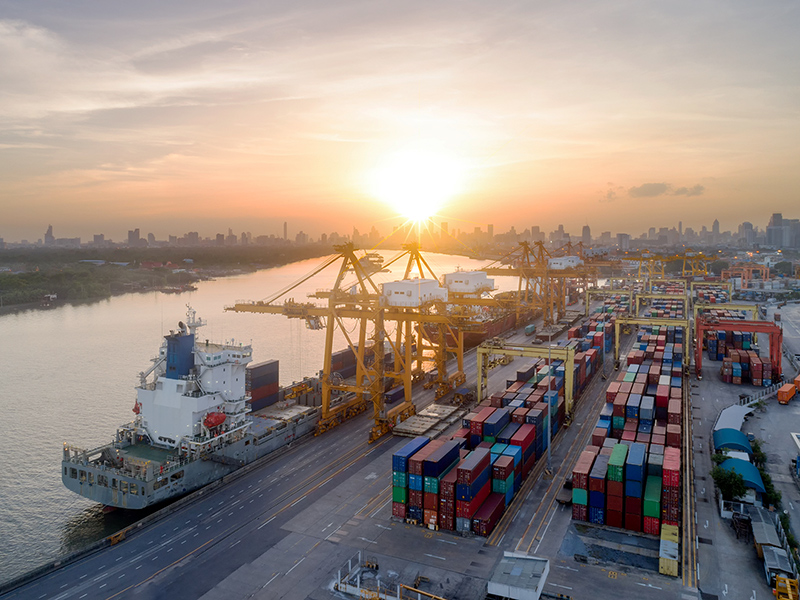
Authors
-

Associate Director, Consumer Sectors and Human Rights, BSR
-
Kelly Scott
Former Manager, Human Rights, BSR
-

Associate, Consumer Sectors, BSR
According to the UN Guiding Principles on Business and Human Rights (UNGPs), companies are responsible for conducting human rights due diligence to manage the most salient human rights risks across their operations and supply chains. To assess workplace conditions like forced labor, child labor, low wages, discrimination, and harassment, for example, companies have historically relied on social audits from their Tier 1 suppliers. However, since the Tazreen Garment Factory and Rana Plaza tragedies in Bangladesh, social audits are increasingly scrutinized. Companies are now expected to go “beyond” auditing by adopting more robust approaches to address human rights violations in their supply chain.
Often treated as a “pass/fail” compliance exercise, traditional social audits aim to capture information within a limited timeframe and involve little effort to understand systemic issues or plans for ongoing supplier engagement. “Beyond audit” approaches, on the other hand, seek to engage suppliers through training and capacity building, integrating worker voices, strengthening management and governance systems, and driving greater transparency.
While many recognize the need for a systemic shift away from audits, there is no easy alternative. Below are six points for companies to consider when addressing human rights risks through a holistic approach:
1. Investment in Governance Structure
Audits are typically managed by third parties, whereas “beyond” audits call for companies to invest in internal governance models to oversee human rights due diligence. An effective “beyond” audit governance structure involves coordination with the procurement team and the implementation of a Supplier Code of Conduct, which requires suppliers to execute their own human rights-related policies. It is essential to develop a strategy that is based on the company’s specific industry context and operations. One example of this is hiring regionally placed, in-market employees, who have a better understanding of local contexts, to oversee supplier relationships.
2. Collaborative Stakeholder Engagement
Partnering with suppliers to understand their challenges, identify solutions, and develop shared commitments has a longer-lasting impact than standalone audits. Forums and stakeholder engagement tools, such as mobile technologies that allow anonymous feedback from workers, can connect buyer companies, suppliers, workers, communities, and governments to increase visibility into supply chains. On-the-ground, direct engagement with suppliers through on-site visits helps companies identify risks and develop culturally and context-relevant programs in collaboration with suppliers. For example, companies can facilitate greater communication between supplier sites and proximal communities to help to foster trust and ongoing engagement.
3. Inclusion and Enforcement of Standards
Aligning human rights policies with international standards, integrating them into supply chain management, and holding suppliers accountable is critical. International human rights standards, such as freedom from slavery or servitude, the right to effective remedy, and the right to freedom of opinion and expression, should be fully embedded into procurement processes. Adherence to these standards should be incorporated into the evaluation of supplier performance and purchasing decisions. Concurrently, buying teams should be trained in responsible buying practices to mitigate the risks often caused from unrealistic deadlines and squeezed prices. Companies should determine the appropriate strategy for termination or remediation of suppliers based on their supplier base. For example, some companies may avoid terminating contracts when violations occur because of limited access to more suppliers, while others may focus instead on remediation and improvement programs.
4. Capacity Building and Incentives
Companies are increasingly investing in capacity building and supplier incentives. These initiatives facilitate knowledge exchange, provide access to tools, and empower suppliers to take ownership of systemic issues and challenges.
Leading companies also recognize that the most effective remediation strategy includes in-person trainings and hands-on support to strengthen management systems. This approach, unfortunately, has not been possible of late due to the COVID-19 pandemic, driving companies to turn to online engagement and multilingual e-learning programs. The uptake of online trainings has been a hurdle, which is why targeted trainings and incentives, such as preferred contracting terms, are essential.
5. Supplier Portals and Grievance Mechanisms
Supplier portals are online platforms that serve as a one-stop shop for suppliers to access codes of conduct, supplier documentation, grievance mechanisms, capacity building tools and trainings. Requiring business partners to register their supply sites on such a platform can improve adherence to human rights principles and streamline monitoring.
These portals have also been where grievance mechanisms are offered to suppliers and their employees. Ensuring that workers in the supply chain have access to a confidential and anonymous grievance mechanism is essential to a “beyond” audit approach. However, many companies have shared that their grievance mechanisms are ineffective and not widely used. New models are being developed to address this gap, including on-site and supplier-led grievance mechanisms, as well as whistleblower technologies.
6. Change Management and Methodology
New technologies are emerging to replace and augment traditional auditing mechanisms. These technologies can increase information flow to consumers, investors, and other stakeholders by employing tools to map supply chains, assess risks, trace products, and act as grievance mechanisms. Some examples include near field communication (NFC) devices, which enable peer-to-peer communication through secure forms of data exchange. Another is blockchain, which operates as a shared ledger to record transactions and track assets in a business network with a decentralized database. Testing these solutions in-house before expanding across the supply chain is best practice. These tools are promising, yet technology cannot address the root of human rights risks without change management at the leadership, buyer, and supplier levels.
Managing human rights across supply chains continues to be an ongoing challenge for companies across all industries. While social audits are one way to gain insights into working conditions in supply chains; there is mounting evidence of their limitations. To ensure that social audits are effective and meaningful, companies must go beyond the traditional audit approach by embracing these best practices to achieve positive outcomes for workers and communities.
Topics
Let’s talk about how BSR can help you to transform your business and achieve your sustainability goals.







